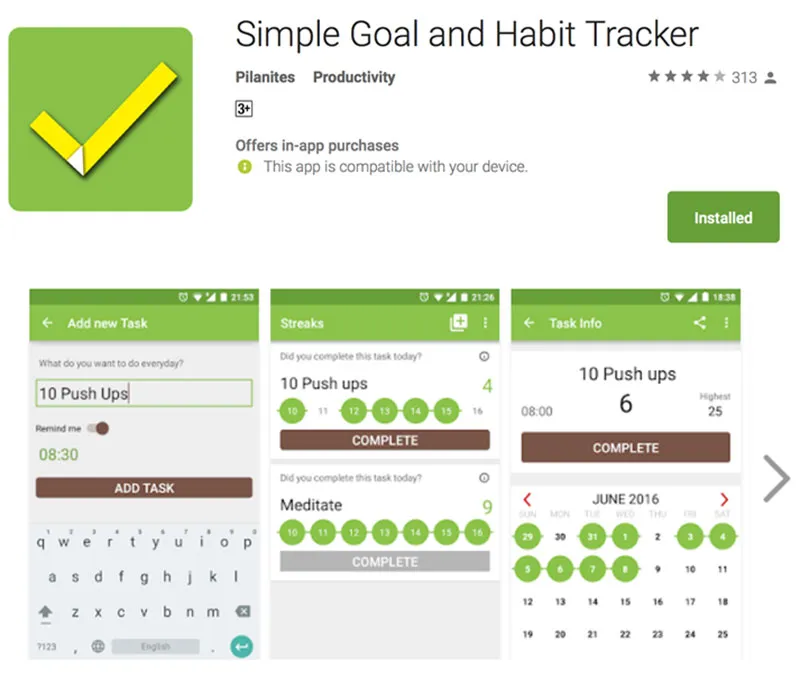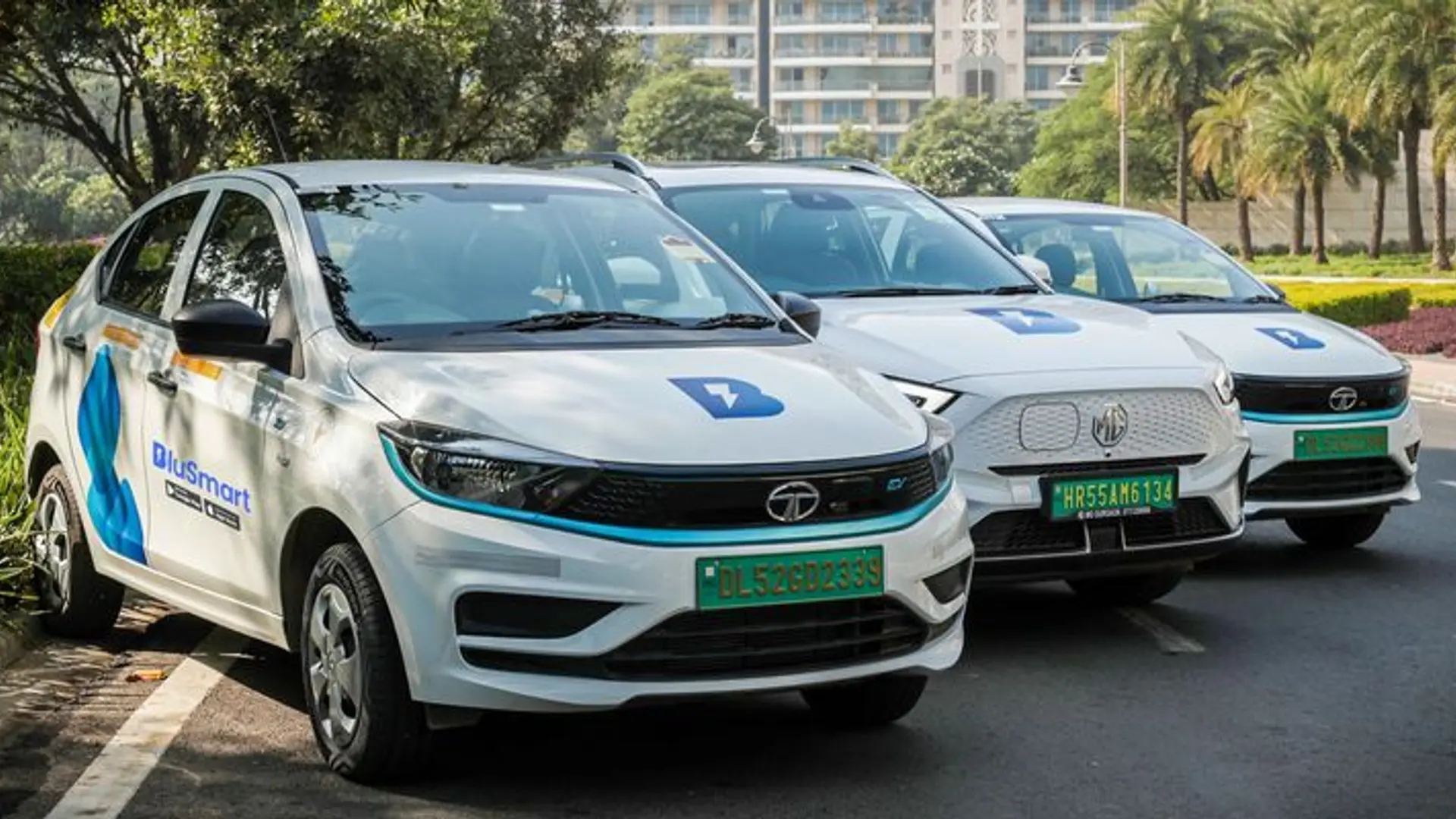How I converted Seinfeld’s Productivity hack into an app
Lessons learnt from 23,000 downloads and $600 of sales in one year on the Play Store
The app I am going to talk about in this post is a habit tracker app, which is free to use with one in-app purchase to unlock unlimited habits.
I had made the app after reading about Seinfeld’s productivity hack to master a skill. The hack simply asks you to get a calendar and cross out the date whenever you practice a skill. Practice every day and after some time, you’ll have a chain or streak of days. Now, the only thing you need to do is not break the chain!

I’ve used this method for a lot of personal things, including losing weight, reading books, or simply learning how to imitate Jim Carrey!
The app is simple to use. You enter a task which you'll hopefully be doing every day. You also tell the app at what time it should remind you and ask if you've completed the task. The app then keeps track of the days you've completed your tasks and shows you your chains, the streaks of days over which you've been working on your habit.
You get 5 habits to track, for free. If you want more, there is an in-app purchase which unlocks unlimited tasks for you for $1.99.
The app has more than 23,000 downloads on Google Play Store and has been used by more than 30,000 people overall.
The app has been live for more than a year since its release on the 23rd of June 2015.
The app was quoted in a tweet by Google Play’s twitter handle and has been getting decent reviews. Although, they gave credit for the app to an Aussie developer!
It'll be great if, before reading this post, you download and get a feel for the habit tracker app on which I'll base this current post.
Downloads
Let's jump into the numbers!
Play Store tells me that the app has been downloaded some 23,000 times, most of which resulted from searches.
The first 1000 downloads were thanks to Product Hunt and an article on Lifehacker. The resulting spike wasn't sustained and the number of downloads went into freefall before stabilizing at about 50 a day.
Another spike I got was in September, when the app was featured in Russian Play Store. The spike contributed some 800 new downloads before things went back to getting installs through app store searches.
One interesting spike came in January of this year. The app wasn't featured anywhere but downloads increased. My guess is that people were searching for apps to keep and track their new year's resolution.

All in all, experimenting with the content in your app’s page (the Store Listing) is the best way to find what works for you.
Sales
Now, let's talk about sales.
There are only two points at which a sale can be initiated.
- You're prompted to make a purchase if you're trying to add a new habit on the app and have already added five.
- There is an option in the menu to "Unlock Unlimited Tasks".
As of this writing, the app has had 307 sales. With each sale worth $1.99, the total comes up to about $600.

I had tracked when the user was hitting the limit and being asked to pay. Users hit the limit only 1,929 times while using the app. The total number of times the "Buy" screen was opened is 3,335.
305 sales from 3,335 screen views gives a good ~9% conversion rate. But 3,335 views from 23,000 downloads (and roughly 7,000 more users) is a really small number, which could be optimized for more sales.
Hopefully, getting more people to the Buy screen will get more sales at the same rate.
User acquisition strategies
As I've already mentioned, store search is the best method for user acquisition. The people who download after searching tend to be the kind that pay as well.
It's good to get your app's title and description right. Making sure your main keyword is in the title, short description, and at least 5 times in full description is a good start. If the app is not live yet, make sure you include the keyword in your package name as well.
Running store experiments and measuring their results are the best bets to master App Store Optimization (ASO).
I had been fortunate enough to be featured in some big publications, but the thing about press is that the surge is temporary. You get new users for 2-3 days after which the spike is over and you’re back to previous levels. Press as a strategy is not sustainable.
I also tried to use Ads to drive installs. I was getting results, but from the business point of view, ads didn’t make any sense. Lifetime Value (LTV) for my users were ~Rs 1.50 ($600 from 23,000 downloads) and I was getting installs for Rs 7. Also, don’t forget that 30% of the revenue goes to Google, so in reality I had ~Re 1/download.
This is why small indie apps can’t rely on advertising. Apps with higher LTVs are the ones that can afford to run ads at scale and make a profit from them.
Things that I could have done better
Pay attention to this section. Most of the things here would apply to almost every app.
App downloads from places other than Play Store
Currently, according to Google Analytics, I have a total of 30,000 different users who have used the app, and according to Play Store, there have only been 23,000 downloads.
The difference (a fairly substantial percentage) comes from people who downloaded the app from Xiaomi market, Wandouija and other such stores.
Had I considered these places, I would have added their in-app purchases or enabled advertising in the app so I could have made some money from these users.
Unoptimized Package Name
Another mistake was the package name I chose.
When I started working on the app, I didn’t have a lot of knowledge about search optimization and therefore I didn’t add any keywords in my package, and simply used the app’s name.
Having your keywords in the package name helps a lot in getting a high ranking.
No translations
I had briefly been promoted by Play Store in Russia which resulted in a spike in downloads from Russia. The app is still popular in Russia and people are recommending it as well.
I wasn’t sure how much translations would help, and hadn’t heard great things about localizations, and therefore, decided to skip the whole thing.
I am still not sure if this is a good or a bad idea, but not having localized versions helps in faster iteration. I will probably look at localization when the app gets more mature.
Unoptimized store listing
Till a week ago, I had the ugliest screenshots you could set your eyes on.

This was how the store listing looked. These screenshots just make me want to cry.
I finally came around to making prettier ones and it has given me an uptick in new users. I am guessing that this is what has caused the increase in the conversion rate and hence increased the number of downloads.

This one looks much better. Also changed the featured image (which does not show up here but is seen in Play Store mobile app)
Some other things that will increase the conversion rate are an explainer video, a great looking feature image, and a BETTER LOOKING LOGO!
Making your store listing look as good as you can is one of the best forms of marketing. Trust me when I say that Google tries to send a lot of traffic to your listing, relying on your listing’s content to get a conversion.
Forget about conversions, an unprofessional listing won’t be picked up by media outlets because they want to cover only legit apps, and not the ones which scream spam.
Not adding multiple products
I initially started developing apps for Android when there was no Play Store, but an Android Market (early 2011).
The standard practice at that time used to be a free app with ads and one purchase to remove ads. Nothing else.
Fast forward 4-5 years; monetisation strategies have changed considerably and I didn’t keep up with the trends. I designed the app with one in-app product in mind, which would unlock everything in the app.
This was not a very good business decision. People who wanted to support me by spending on the app were not able to spend a lot of money and the ones that just wanted to get the full version but were not willing to accept my higher price range took their wallets somewhere else.
A better strategy would be to create in-app products for major features and sell them individually, and then make one “Unlock Everything” product for a discounted price.
Unoptimized Rating System
Ratings and reviews are pretty important for better ASO. Currently, I just have a link to the Play Store page in the app settings to gather reviews, which is an embarrassingly unoptimized method for getting reviews.
A better method would be to ask for reviews and ratings, but not through a pop-up. Blending the action with the UI natively (like how native ads blend with the app) will be a much better way of asking.
Of course, the keywords written in reviews by users are taken into consideration for search, and thus, will be very useful to rank higher.
One trick while asking for a review is to send the user to Store page only if they click on 4 or 5 stars when you ask them for a rating.
For anything less, open the feedback box and let them tell you why they decided to give you a lower rating. Win-win!
Let’s end it here
I could go on and on about little things I did wrong, but you get the gist. You do some things right, and you learn from others.
I hope you learn from these mistakes and have a better time on the Play Store.
Have you used any of the strategies listed here? Did they work for you? Comment here or let me know on twitter @shobhitic.
If you’d like to read more about it, I had written a one year anniversary post on my blog - Link.
(Disclaimer: The views and opinions expressed in this article are those of the author and do not necessarily reflect the views of YourStory.)







